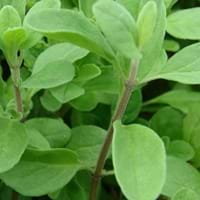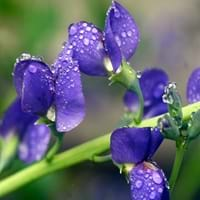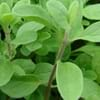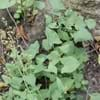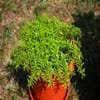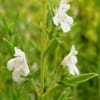Life Span
Annual
Perennial
Origin
Western Europe, Turkey
North America, United States, North-Central United States, Central United States, Canada
Types
Aromatic herb
Blue False Indigo
White False Indigo
Number of Varieties
Not Available
Habitat
Dry areas, Rocky areas
gardens, Grassland, Warmer regions
USDA Hardiness Zone
4-9
2-8
Sunset Zone
8, 9, 10, 11, 12, 13, 14, 15, 16, 17, 18, 19, 20, 21, 22, 23, 24
A1, A2, A3, 1a, 1b, 2a, 2b, 3a, 3b, 4, 5, 6, 7, 8, 9
Habit
Cushion/Mound-forming
Oval or Rounded
Flower Color
White, Pink
Purple
Flower Color Modifier
Bicolor
Not Available
Fruit Color
Not Available
Light Green
Leaf Color in Spring
Yellow, Yellow green
Light Green, Gray Green, Gray
Leaf Color in Summer
Yellow, Yellow green
Light Green, Gray Green, Gray
Leaf Color in Fall
Yellow, Light Green, Lemon yellow
Light Green, Gray Green, Gray
Leaf Color in Winter
Light Green
Not Available
Leaf Shape
oblong or obovate
Ovate
Plant Season
Spring, Summer, Fall, Winter
Summer, Fall
Sunlight
Full Sun
Full Sun, Partial Sun, Partial shade
Growth Rate
Medium
Medium
Type of Soil
Loam, Sand
Loam, Sand
The pH of Soil
Neutral, Alkaline
Neutral, Alkaline
Soil Drainage
Well drained
Well drained
Bloom Time
Late Spring, Early Summer, Summer
Summer, Late Summer, Early Fall
Tolerances
Drought
Drought
Where to Plant?
Ground
Ground, Pot
How to Plant?
Seedlings
Seedlings, Stem Planting
Plant Maintenance
Medium
Medium
Watering Requirements
Do Not over Water
Average Water Needs
In Summer
Lots of watering
Lots of watering
In Spring
Moderate
Moderate
In Winter
Average Water
Average Water
Soil pH
Neutral, Alkaline
Neutral, Alkaline
Soil Type
Loam, Sand
Loam, Sand
Soil Drainage Capacity
Well drained
Well drained
Sun Exposure
Full Sun
Full Sun, Partial Sun, Partial shade
Pruning
Remove damaged leaves, Remove dead branches, Remove dead leaves
Remove damaged leaves, Remove dead branches, Remove dead leaves
Fertilizers
All-Purpose Liquid Fertilizer
All-Purpose Liquid Fertilizer
Pests and Diseases
Red blotch
Red blotch
Plant Tolerance
Drought
Drought
Flower Petal Number
Single
Single
Fragrant Bark/Stem
Yes
Yes
Foliage Texture
Medium
Fine
Foliage Sheen
Matte
Matte
Self-Sowing
Yes
Not Available
Attracts
Not Available
Not Available
Allergy
Not Available
Not Available
Aesthetic Uses
Showy Purposes
Showy Purposes
Beauty Benefits
Not Available
Not Available
Environmental Uses
Air purification
Air purification
Medicinal Uses
Cold, Cough, Diabetes, gallstones, Liver problems, Stomach pain
Not Available
Part of Plant Used
Leaves, Seeds
Whole plant
Other Uses
Culinary use, Traditional medicine
Used as Ornamental plant
Used As Indoor Plant
Yes
No
Used As Outdoor Plant
Yes
Yes
Garden Design
Container, Edging, Edible, Groundcover, Herb / Vegetable, Mixed Border, Rock Garden / Wall
Foundation, Mixed Border, Rock Garden, Wall
Botanical Name
ORIGANUM majorana 'Aureum'
AMORPHA canescens
Common Name
Sweet Marjoram
False Indigo
In Hindi
मीठा कुठरा
इंडिगो
In German
Majoran
falsches Indigo
In French
marjolaine
faux Indigo
In Spanish
mejorana
Falso Indigo
In Greek
γλυκό μαντζουράνα
Λάθος Indigo
In Portuguese
manjerona
false Indigo
In Polish
słodki majeranek
fałsz Indigo
In Latin
amaracus
falsum indicum
Phylum
Tracheobionta
Magnoliophyta
Class
Magnoliopsida
Not Available
Family
Lamiaceae
Fabaceae
Clade
Angiosperms, Asterids, Rosids
Angiosperms, Eudicots, Rosids
Tribe
Not Available
Not Available
Subfamily
Not Available
Not Available
Number of Species
Not Available
Not Available
Season and Care of Sweet Marjoram and False Indigo
Season and care of Sweet Marjoram and False Indigo is important to know. While considering everything about Sweet Marjoram and False Indigo Care, growing season is an essential factor. Sweet Marjoram season is Spring, Summer, Fall and Winter and False Indigo season is Spring, Summer, Fall and Winter. The type of soil for Sweet Marjoram is Loam, Sand and for False Indigo is Loam, Sand while the PH of soil for Sweet Marjoram is Neutral, Alkaline and for False Indigo is Neutral, Alkaline.
Sweet Marjoram and False Indigo Physical Information
Sweet Marjoram and False Indigo physical information is very important for comparison. Sweet Marjoram height is 15.20 cm and width 30.50 cm whereas False Indigo height is 60.00 cm and width 120.00 cm. The color specification of Sweet Marjoram and False Indigo are as follows:
Sweet Marjoram flower color: White and Pink
Sweet Marjoram leaf color: Yellow and Yellow green
False Indigo flower color: Purple
- False Indigo leaf color: Light Green, Gray Green and Gray
Care of Sweet Marjoram and False Indigo
Care of Sweet Marjoram and False Indigo include pruning, fertilizers, watering etc. Sweet Marjoram pruning is done Remove damaged leaves, Remove dead branches and Remove dead leaves and False Indigo pruning is done Remove damaged leaves, Remove dead branches and Remove dead leaves. In summer Sweet Marjoram needs Lots of watering and in winter, it needs Average Water. Whereas, in summer False Indigo needs Lots of watering and in winter, it needs Average Water.
